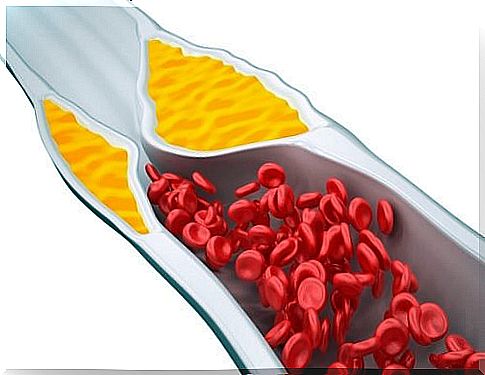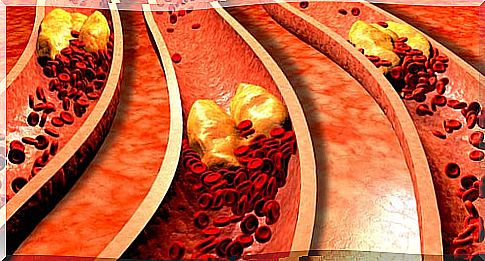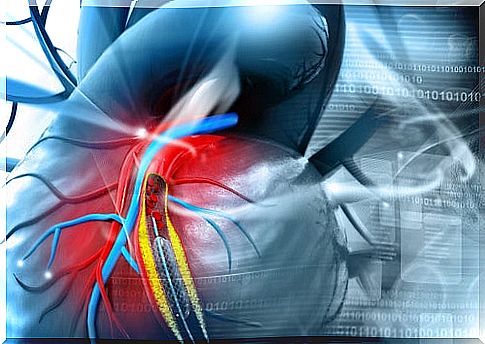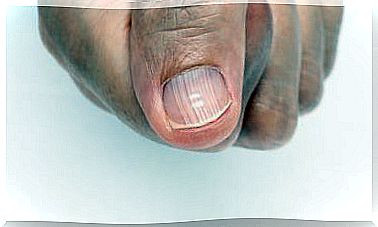Atherosclerosis
Atherosclerosis is a syndrome that affects the arterial walls of the body. Learn more about her.

In this article we are going to focus on the disease: atherosclerosis. What is it about? How does it originate? Why is it dangerous? How is your treatment?
Find out, it can be of great help at some point. Or maybe you are facing something like that, either by yourself or a close family member.
Go for it.
What is atherosclerosis?
Atherosclerosis is a syndrome in which excess lipids (fats) are deposited on the walls of the arteries.
This deposit causes an inflammatory reaction that prevents the flow of oxygen to the various organs of the body. Thus, the arterial pathways narrow as the fat accumulated in them hardens.
Before continuing, it is necessary to remember that the arteries are the blood vessels responsible for carrying oxygen to the brain, therefore, any obstacle that prevents this process will become a discomfort for the body. On the other hand, focal deposits of particles (of lipids) are called “atheroma plaques”.
How is an atheroma plaque formed?
When the layer of arteries that is in contact with the blood (endothelium) is affected by an atheroma plaque, the permeability increases. As this happens, LDL cholesterol is allowed to easily pass through the endothelium and deposit on the inner layer.
LDL cholesterol is called “bad cholesterol” and HDL cholesterol is called “ good cholesterol.”
- LDLs are proteins in the blood that carry cholesterol to the cells that need it. When there is an excess of cholesterol, these molecules are increased and are deposited in the arterial intimal layer where they are retained.
- HDL are proteins that, being also in the blood, transport cholesterol to the liver. This pathway is a “cleaning system”, which is why it is called “good cholesterol.”
When the former occurs, macrophages (white blood cells) go into action to capture cholesterol. Then, a series of chemical oxidation reactions take place, the consequence of which is the accumulation of macrophages with cholesterol inside. These cells are called “foam cells.”
Eventually, these cells die (that is, they enter apoptosis), releasing their content on the wall of the arteries. The release of cytokines (“messenger” molecules) by macrophages triggers the secretion of collagen. In this way, the collagen produced by the cells covers the fat plaque.

How is the endothelium damaged?
The endothelium is a tissue that lines the inner area of all blood vessels. Its damage is a consequence of the incidence of a series of factors, some modifiable and others not. In addition, a greater genetic predisposition must be added to them.
On the one hand, the non-modifiable factors are age and male sex. Estrogens act as a protective factor in women of childbearing age.
Therefore, in men and postmenopausal women, the risk is greater. On the other hand, the factors that can be modified are, basically, toxic and sedentary habits:
- Smoking
- Mellitus diabetes.
- Arterial hypertension.
- Metabolic syndrome.
- Alcohol consumption
- Overweight or obese
- Pathologies in the blood.
- Hyperlipidemia (high cholesterol).
- Having suffered from a cardiovascular disease.
- Environmental pollution, among other agents of the external environment.
Why is atherosclerosis dangerous?
First, atherosclerosis is dangerous since it has proven to be the most common cause of myocardial infarction.
In most cases, atheroma plaque forms in the arteries that supply the heart. It is also relatively common for a plaque to rupture and occlude one of these arteries.
In addition, it increases the risk of ischemia in other regions, which can cause a cerebrovascular accident (a stroke). Atheroma plaque can also form and occlude the smaller vessels of the peripheral circulation.
Another consequence of arterial damage is the formation of aneurysms, that is, abnormal dilations in the walls of an artery or vein.

Treatment
In this regard, the most important thing is primary prevention since it is aimed at reducing the possible manifestations of atherosclerosis, especially ischemic events.
Therefore, it is essential to lead a healthy lifestyle, definitely get away from toxic habits and avoid sedentary lifestyle. The most common recommendations for preventive treatment are the following:
- Regulate alcohol consumption.
- Maintain a healthy diet.
- Maintain a good exercise routine.
- Avoid tobacco. And if you are a smoker, it is recommended not to continue with this habit.
- In patients with arterial hypertension, weight loss and control of salt intake are advised. If the above measures are not effective and in severe cases, antihypertensive treatment with drugs is prescribed.
- Regarding LDL cholesterol, statin treatment should be started in all patients with values above 190.
- When there is a high risk of coronary heart disease or in diabetic patients, start treatment if the levels are between 70 and 189. If the person has already suffered from heart disease or a stroke, it is recommended to always treat.
In addition to preventive treatment, there is a surgical treatment that is intended for those patients whose case is serious.
These are patients with angina pectoris due to the obstruction of the coronary arteries. The therapeutic options are the performance of a coronary bypass , or the performance of a procedure called angioplasty.
- The bypass, in short, consists of making a small bypass that connects the vessel, avoiding the plate.
- Angioplasty consists of recanalization of the blocked artery.








